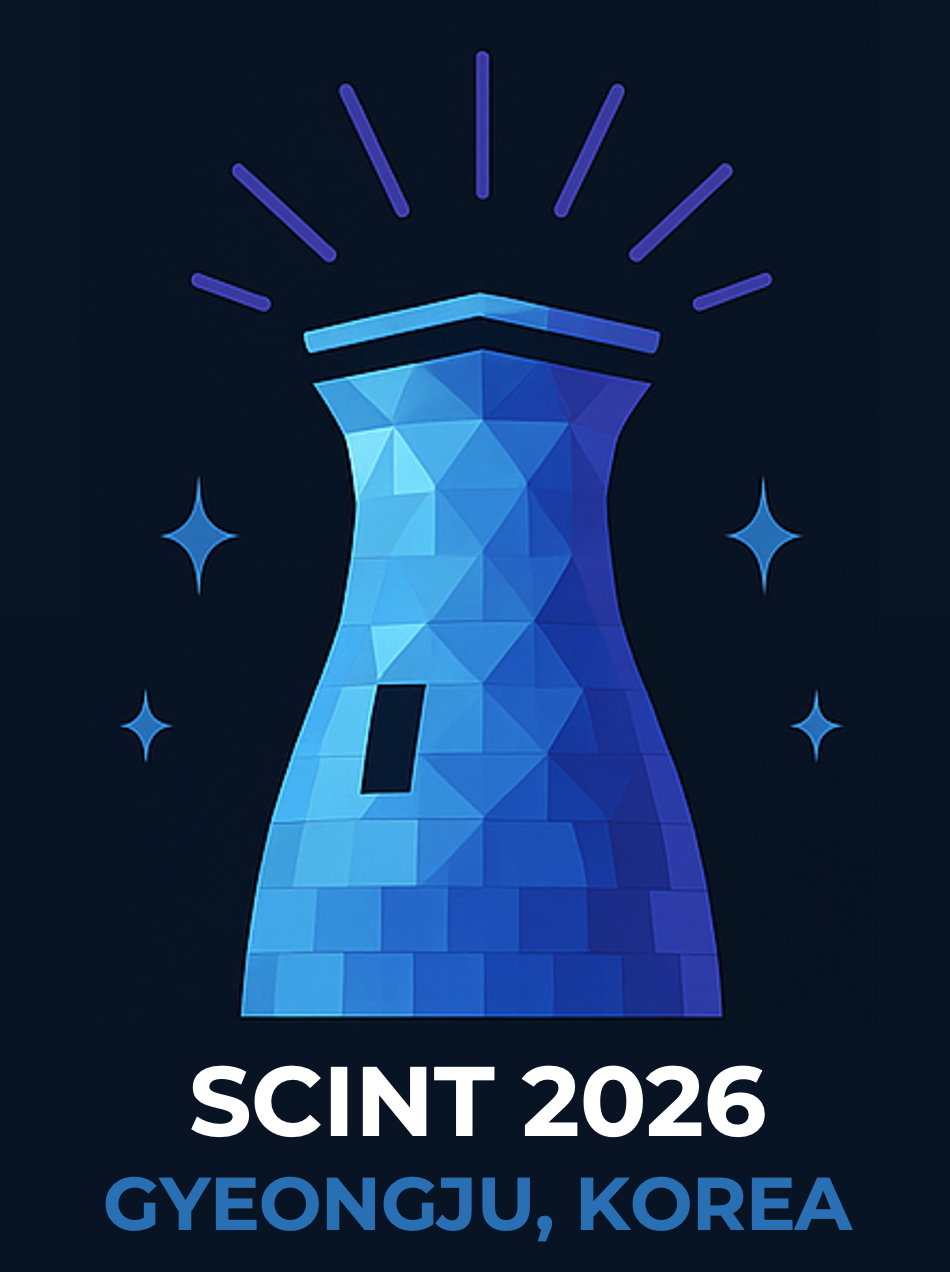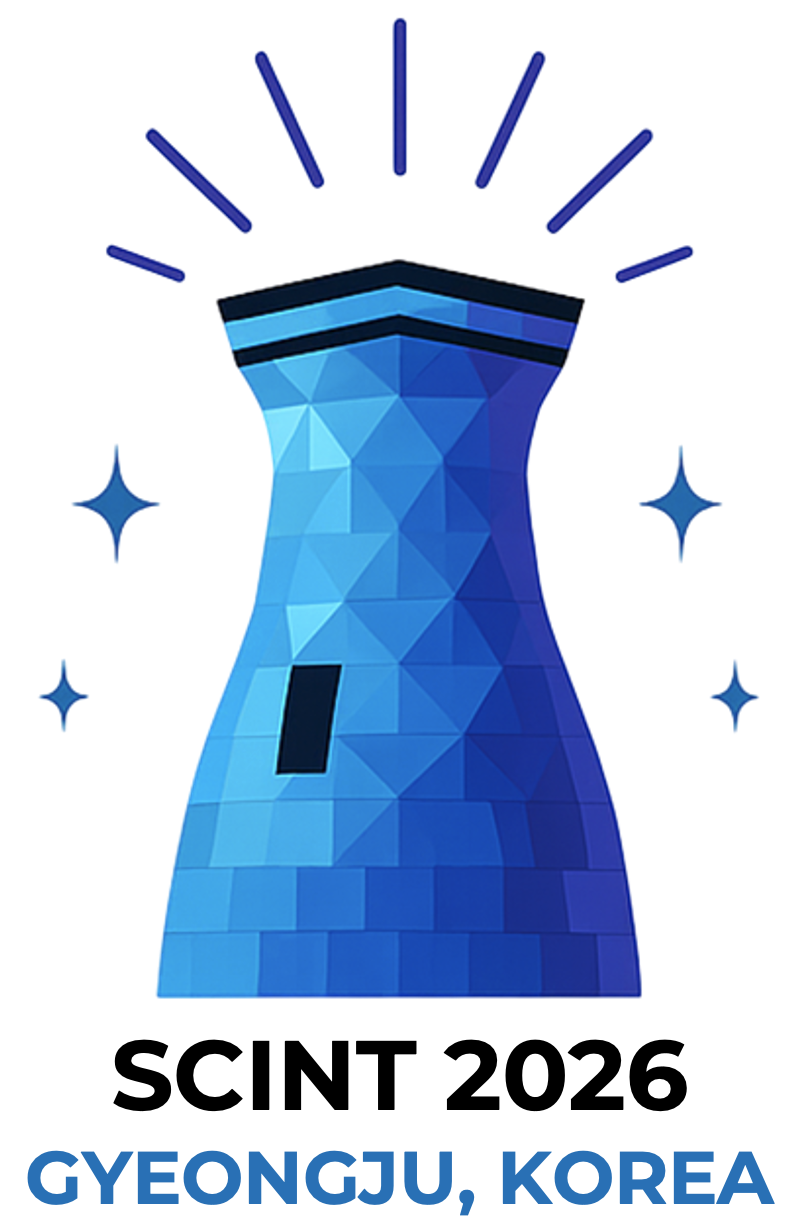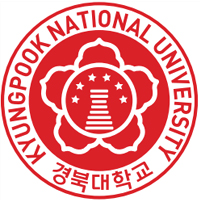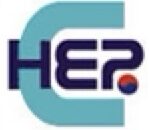18th International Conference on Scintillating Materials and their Applications
Gyeongju, Korea
May 25 – May 29, 2026
Lahan Select Gyeongju
PRESENTATION LETTER
Dear colleagues,
We have the pleasure to invite you to attend the forthcoming 18th International Conference on Scintillating Materials and their Applications (SCINT2026) that will be held at Gyeongju, Korea, from May 25th to May 29th, 2026.
After 34 years of fruitful exchanges and collaborations, and 17 successful conferences, the SCINT community is more active than ever. Initially dedicated to inorganic scintillators—primarily for high-energy calorimetry and classical positron emission tomography—the SCINT conference series was established in 1992 to bring together communities from chemistry, physics, and engineering. Over time, the SCINT community has evolved alongside technological advances, expanding experimental and theoretical knowledge in scintillation, and responding to emerging needs across diverse fields such as security, medical imaging, environmental monitoring, high-energy physics, rare-event searches and research for innovative cancer treatments. The multidisciplinary efforts of the SCINT community have led to a significantly more profound understanding of the fundamental mechanisms underlying the scintillation process in inorganic scintillators. As a result, the ability to engineer scintillation efficiency, energy resolution, kinetics, and the radiation-resistant optical properties of inorganic scintillators—once only a dream 30 years ago—has now become a reality.
While the early focus was on single crystals, the scope of materials has since broadened to include thin films, fibers, and nanostructures. To address increasingly demanding applications, such as Time-of-Flight PET and neutron detection, hybrid materials have also become central, offering the possibility of combining the best properties of different compounds. Today, the SCINT conference series also embraces organic and liquid scintillators, reflecting the dynamic development of the field.
The main topics covered in the conference include:
- Mechanisms and theory of scintillation
- Characterization of scintillators
- Crystal growth and structural control
- Optical ceramics and glasses
- Nano- and metamaterials, hybrids, organic, and liquid scintillators
- Scintillators for fast-timing detection and imaging
- Scintillators for neutron detection and imaging
- Applications of scintillators in fundamental research, health, environment, energy, metrology, and industrial controls
Plenary lectures, keynotes, orals, and poster sessions are planned during the whole week, together with several social activities. In addition, a two-day summer school for young researchers on scintillation mechanisms and applications will be organized just before the start of the conference.
The submitted conference proceedings will be published on IEEE Transactions on Nuclear Science after a regular peer-review process. We look forward to receiving your contributions and to developing a highly engaging scientific program.
See you soon in Gyeongju,
SCINT2026 LOC chair
Hong Joo Kim

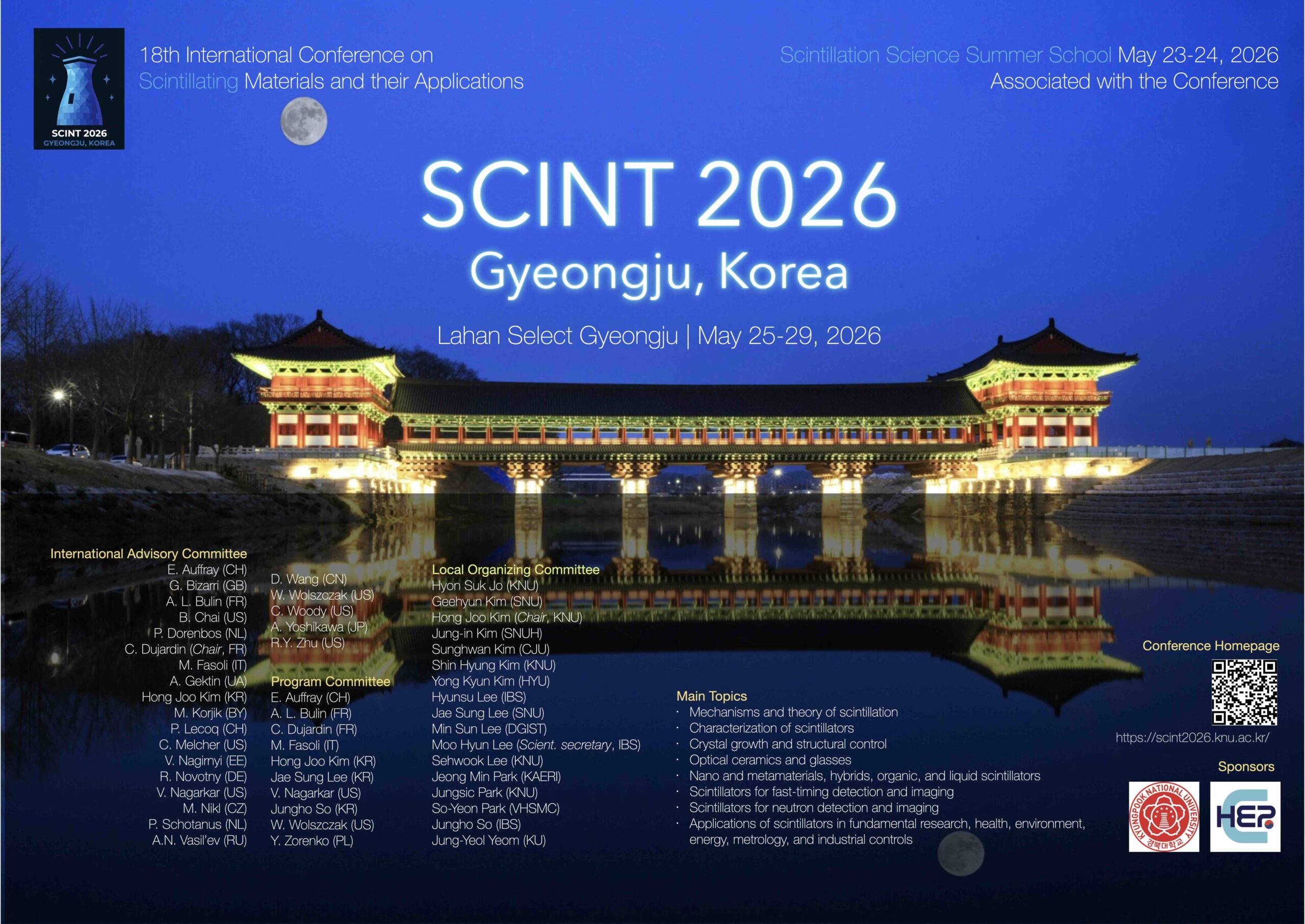
KEY DATES
Please we kindly ask you to respect the following deadlines:
Oct 1, 2025
Opening of abstract submission
Jan 15, 2026
Abstract submission deadline
Mar 5, 2026
Notification of abstract acceptance (Oral/Poster)
Apr 6, 2026
Early registration deadline
May 23 – 24, 2026
SCINT2026 School
May 25 – 29, 2026
SCINT2026 Conference
SCINT CONFERENCE
ABOUT SCINT
- SCINT is an International Conference Series on Scintillating Materials and their Applications. Beginning in 1992, the SCINT conferences have been held every two year in Chamonix (France), San Francisco (USA), Delft (The Netherlands), Shanghai (China), Moscow (Russia), Chamonix (France), Valencia (Spain), Alushta (Ukraine), Wake Forest (USA), Jeju (Korea), Giessen (Germany), Shanghai (China), Berkeley (USA), Chamonix (France), Sendai(Japan), Santa Fe (USA) and Milan (Italy).
